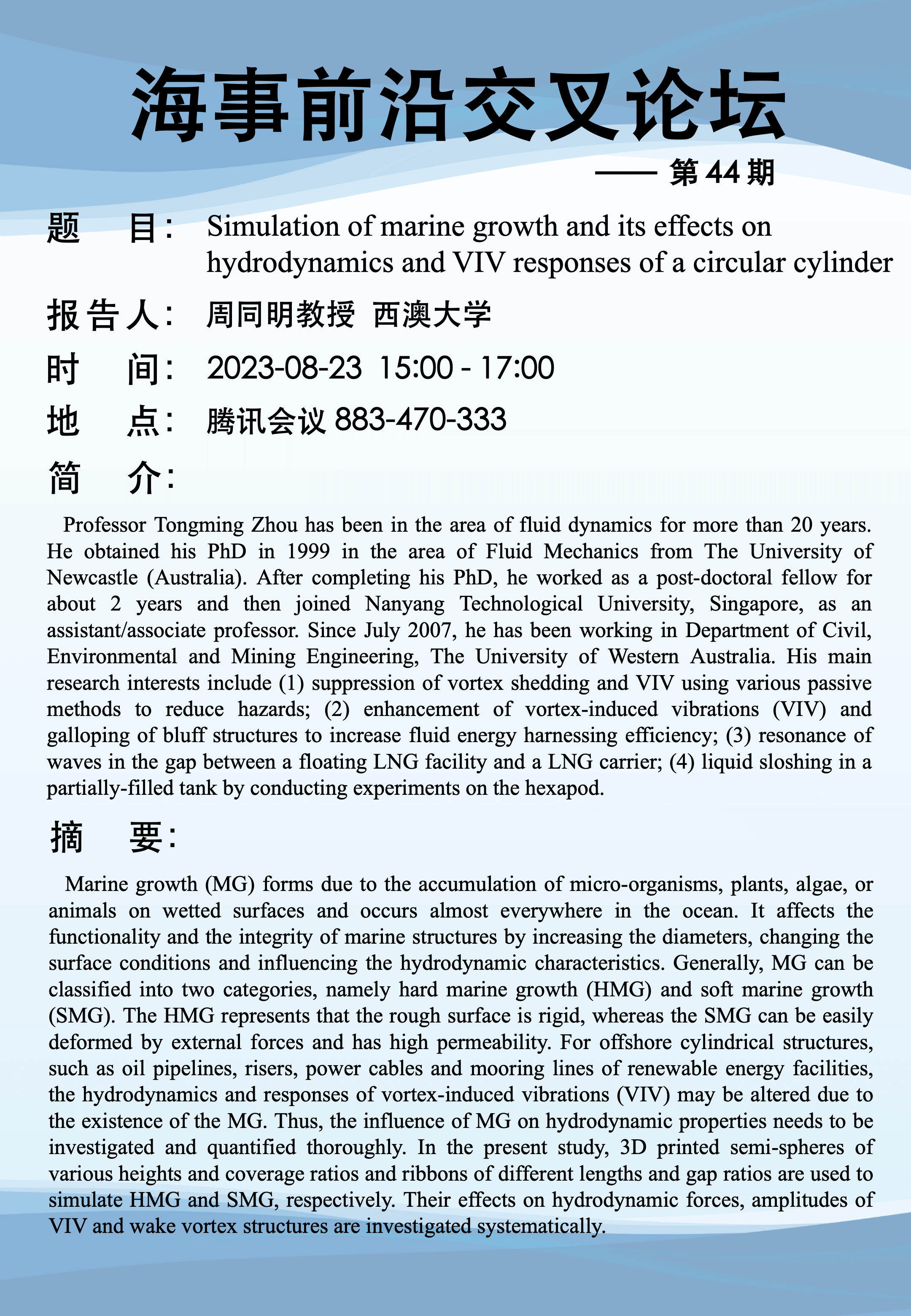介绍:
- Professor Tongming Zhou has been in the area of fluid dynamics for more than 20 years. He obtained his PhD in 1999 in the area of Fluid Mechanics from The University of Newcastle (Australia). After completing his PhD, he worked as a post-doctoral fellow for about 2 years and then joined Nanyang Technological University, Singapore, as an assistant/associate professor. Since July 2007, he has been working in Department of Civil, Environmental and Mining Engineering, The University of Western Australia. His main research interests include (1) suppression of vortex shedding and VIV using various passive methods to reduce hazards; (2) enhancement of vortex-induced vibrations (VIV) and galloping of bluff structures to increase fluid energy harnessing efficiency; (3) resonance of waves in the gap between a floating LNG facility and a LNG carrier; (4) liquid sloshing in a partially-filled tank by conducting experiments on the hexapod.
报告摘要:
- Marine growth (MG) forms due to the accumulation of micro-organisms, plants, algae, or animals on wetted surfaces and occurs almost everywhere in the ocean. It affects the functionality and the integrity of marine structures by increasing the diameters, changing the surface conditions and influencing the hydrodynamic characteristics. Generally, MG can be classified into two categories, namely hard marine growth (HMG) and soft marine growth (SMG). The HMG represents that the rough surface is rigid, whereas the SMG can be easily deformed by external forces and has high permeability. For offshore cylindrical structures, such as oil pipelines, risers, power cables and mooring lines of renewable energy facilities, the hydrodynamics and responses of vortex-induced vibrations (VIV) may be altered due to the existence of the MG. Thus, the influence of MG on hydrodynamic properties needs to be investigated and quantified thoroughly. In the present study, 3D printed semi-spheres of various heights and coverage ratios and ribbons of different lengths and gap ratios are used to simulate HMG and SMG, respectively. Their effects on hydrodynamic forces, amplitudes of VIV and wake vortex structures are investigated systematically.

